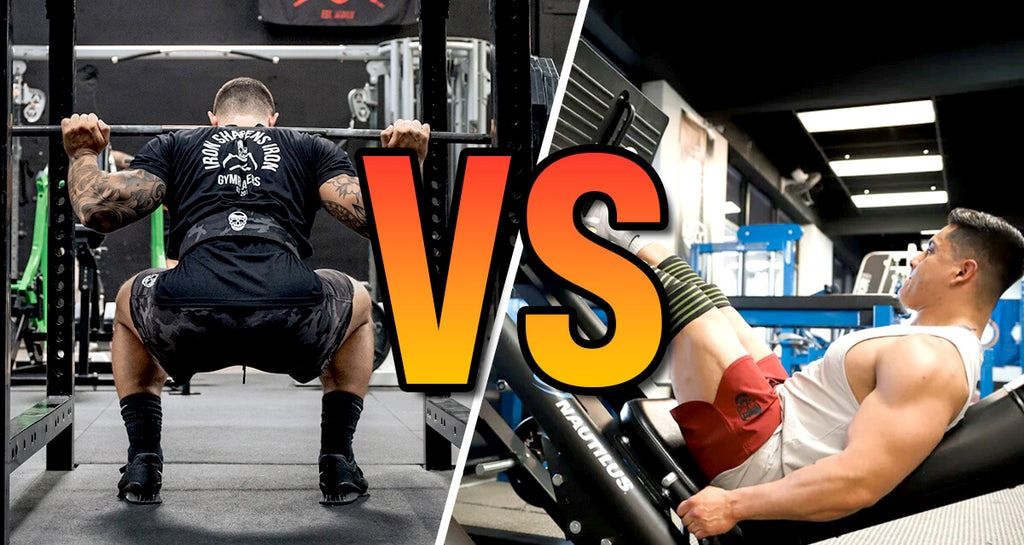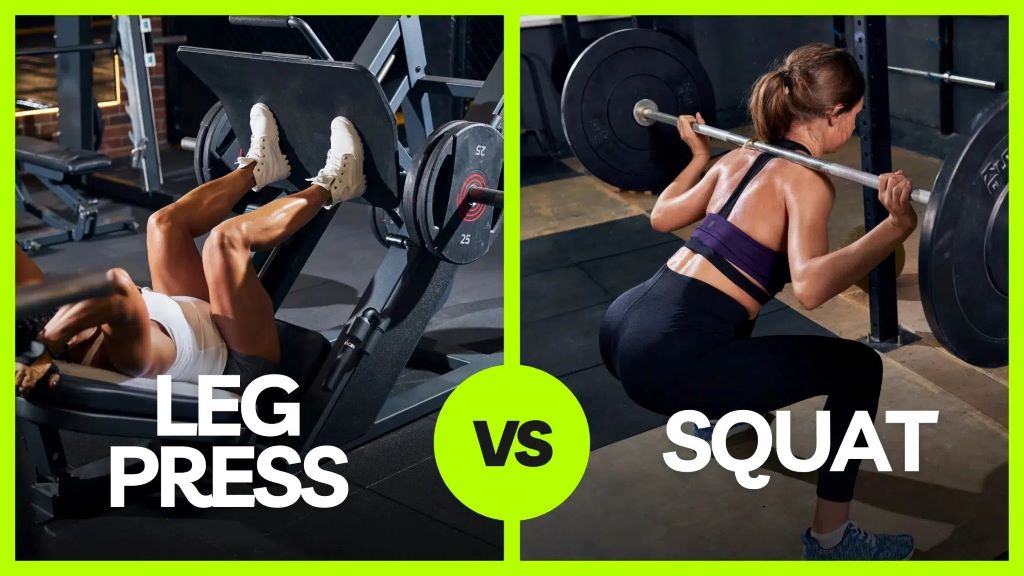When building lower body strength, choosing the right exercise is key. The leg press and squat are two powerhouse movements that target similar muscle groups but differ in execution, benefits, and challenges. At Myself Improvement Today, we aim to help you make informed fitness choices. This article compares the leg press and squat, with a focus on the leg press weight chart to guide your training decisions. Whether you’re a beginner or a seasoned lifter, understanding these exercises can optimize your workouts.
Understanding the Leg Press and Squat
The leg press and squat both target the quadriceps, hamstrings, glutes, and calves, but their mechanics differ. The leg press is a machine-based exercise where you push a weighted platform away from your body while seated or reclining. Squats, on the other hand, are a free-weight or bodyweight movement where you lower your body by bending your knees and hips, then push back up. To maximize your leg press performance, a leg press weight chart can help you track progress and set realistic goals based on your fitness level.
The leg press offers a controlled environment, making it ideal for beginners or those recovering from injury. Squats require more balance and coordination, engaging stabilizing muscles like the core and lower back. Both exercises have unique benefits, but choosing the right one depends on your goals, experience, and equipment access.
Key Differences Between Leg Press and Squat
Muscle Activation
Both exercises target the lower body, but squats engage more muscle groups overall. Squats activate the core, lower back, and stabilizing muscles in addition to the legs. This makes them a compound movement that builds functional strength. The leg press primarily focuses on the quads, hamstrings, and glutes, with minimal core involvement. According to a study from the American Council on Exercise, squats recruit up to 20% more muscle fibers than the leg press due to their dynamic nature.
Range of Motion
Squats typically involve a greater range of motion, especially when performed below parallel. This engages the glutes and hamstrings more effectively. The leg press, however, has a fixed range of motion determined by the machine’s design. While you can adjust foot placement to target different muscles, the leg press limits full-body engagement compared to squats.
Safety and Accessibility
The leg press is often safer for beginners because the machine stabilizes the weight. This reduces the risk of improper form or injury. Squats, especially barbell squats, require proper technique to avoid strain on the back or knees. However, squats can be done anywhere with minimal equipment, while the leg press requires a gym machine. For those new to the leg press, a weight chart can provide benchmarks for safe progression.
Benefits of the Leg Press
The leg press shines in its ability to isolate lower body muscles. Here are some key advantages:
- Controlled movement reduces injury risk.
- Adjustable weights allow precise progression (check a leg press weight chart for guidance).
- Ideal for high-volume training without taxing the upper body.
- Suitable for beginners or those with limited mobility.
Additionally, the leg press allows you to lift heavier weights compared to squats, as it removes the need for balance. This can boost confidence and strength gains, especially for new lifters.
Benefits of the Squat
Squats are a cornerstone of strength training for good reason. Their benefits include:
- Full-body engagement, improving coordination and balance.
- Functional strength that translates to daily activities like walking or climbing stairs.
- Versatility, with variations like front squats, goblet squats, or bodyweight squats.
- Increased calorie burn due to greater muscle activation.
Moreover, squats improve athletic performance by mimicking natural movement patterns. A study published by Healthline notes that squats enhance power output, making them ideal for athletes.

Leg Press vs Squat: A Comparison Chart
To simplify your decision, here’s a comparison chart highlighting key aspects:
| Aspect | Leg Press | Squat |
| Primary Muscles | Quads, hamstrings, glutes | Quads, hamstrings, glutes, core, back |
| Equipment Needed | Leg press machine | Barbell, dumbbells, or bodyweight |
| Skill Level | Beginner-friendly | Requires technique and practice |
| Range of Motion | Fixed, machine-dependent | Full, adjustable depth |
| Safety | Lower risk due to machine stabilization | Higher risk if form is poor |
| Weight Capacity | Higher weights possible | Limited by balance and form |
| Functional Benefits | Isolated strength | Functional, real-world strength |
This chart can guide your choice based on your goals. For precise leg press weight recommendations, refer to a leg press weight chart tailored to your experience level.
How to Use a Leg Press Weight Chart
A leg press weight chart is a tool to track your progress and set goals. It typically lists recommended weights based on your fitness level, gender, and training experience. For example, beginners might start with 50-100 pounds, while advanced lifters can handle 300-500 pounds or more. These charts help you avoid overloading the machine, reducing injury risk. They also provide milestones to aim for, keeping you motivated.
To use a weight chart effectively, assess your current strength level. Start with a weight you can lift for 10-12 reps with good form. Gradually increase the weight as you get stronger, using the chart as a reference. Consistency is key to seeing results.
When to Choose Leg Press Over Squat
The leg press is ideal in specific scenarios. If you’re new to strength training, the machine’s stability helps build confidence. It’s also great for targeting specific leg muscles without worrying about balance. For those recovering from back injuries, the leg press reduces spinal stress compared to squats. Additionally, if your goal is hypertrophy (muscle growth), the leg press allows you to lift heavier weights safely.
However, the leg press isn’t a complete substitute for squats. It lacks the functional benefits of squats, which mimic everyday movements. If your focus is on overall fitness or athletic performance, squats may be the better choice.
When to Choose Squat Over Leg Press
Squats are the go-to for building functional strength. They improve balance, coordination, and core stability, making them ideal for athletes or anyone seeking real-world fitness. Squats also offer more variation, allowing you to target different muscles by adjusting your stance or equipment. If you have access to minimal equipment or prefer bodyweight exercises, squats are more accessible.
That said, squats require proper form to avoid injury. Beginners should start with bodyweight squats before progressing to weighted variations. Working with a trainer can help ensure correct technique.
Combining Leg Press and Squat in Your Routine
Why choose one when you can do both? Combining leg press and squats in your workout maximizes lower body strength. For example, you might start with squats to engage multiple muscle groups, then finish with leg press for targeted quad or glute work. This approach balances functional and isolated training.
A sample weekly plan might include:
- Day 1: Barbell squats (3 sets of 8-10 reps) + leg press (3 sets of 12-15 reps).
- **Day 3
**: Bodyweight squats (4 sets of 15 reps) for mobility + leg press (3 sets of 10 reps with heavier weight).
- Day 5: Front squats (3 sets of 8 reps) + single-leg press (2 sets of 12 reps per leg).
Always prioritize form and use a leg press weight chart to guide your progression.
Conclusion
The leg press and squat are both excellent exercises for building lower body strength, but they serve different purposes. The leg press offers a controlled, beginner-friendly option for isolating leg muscles, while squats provide functional, full-body benefits. By understanding their differences and using tools like a leg press weight chart, you can tailor your workouts to your goals. Whether you choose one or both, consistency and proper form are key to success.
Frequently Asked Questions
- Can the leg press replace squats in my workout?
The leg press can complement squats but not fully replace them. Squats offer functional benefits and engage more muscles, while the leg press isolates specific leg muscles.
- How much weight should I start with on the leg press?
Beginners should start with 50-100 pounds, depending on their strength. Refer to a leg press weight chart for personalized recommendations based on your fitness level.
- Are squats better for weight loss than leg press?
Squats burn more calories due to greater muscle activation, making them slightly better for weight loss. However, both exercises support fat loss when paired with a calorie deficit.
- Is the leg press safer than squats?
Yes, the leg press is generally safer due to its machine-based stability, which reduces the risk of improper form. Squats require more technique to avoid injury.
- How often should I do leg press or squats?
Aim for 2-3 sessions per week, alternating between the two exercises. Allow at least 48 hours of rest between leg workouts to promote recovery.
Read More:
What Exercise Machine Burns the Most Calories?




